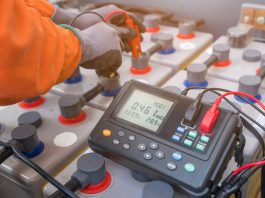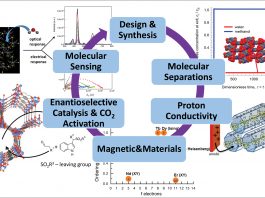Researchers at Fraunhofer are working towards improving thermal storage for the energy transition by enhancing the thermal conductivity of zeolite materials.
In Germany, approximately 55% of final energy consumption goes towards heating and cooling. However, large quantities of heat dissipate completely unused, as it is not generated at the time it is needed. Thermal storage utilising zeolite material permits heat to be accumulated for extended periods of time without any being lost. Researchers at Fraunhofer-Gesellschaft are now working towards enhancing the thermal conductivity of zeolites.
Improving thermal storage for winter months
The majority of contemporary roofs have solar collectors that provide homes with warm water. In summer, this is very efficient, but the demand for heating grows to much greater levels in the winter. Consequently, thermal storage must be capable of storing excess heat for when it is needed. Typically, massive water tanks have been employed for this storage; water is heated in the tanks and the heat is stored directly as heat.
However, this technique necessitates large volumes and results in heat being lost, regardless of good insulation. Meanwhile, thermochemical storage allows for thermal energy generated in the summer to be maintained for application in the winter.
Unlike water, zeolites do not store the heat directly; instead, the heat draws out the water that has been collected within the material. In the energetic state, zeolites are entirely dry; conversely, when water vapour is passed through the pellets, heat is released.
The benefit of this method is that the energy is not stored in the form of increased heat but in the form of a chemical state. This means that heat is not lost during long-term storage. However, there is one current limitation: zeolites have inadequate thermal conductivity, making the process of transferring the heat from the heat exchanger to the material and back complicated.
A group of scientists at the Fraunhofer Institute for Organic Electronics, Electron Beam and Plasma Technology FEP have now figured out a solution through their work on the ZeoMet project.
Aluminium coated zeolite
“We coated the zeolite pellets with aluminium – this doubled thermal conductivity after just the first attempt without negatively impacting water adsorption and desorption. We are currently aiming to increase this by five to ten times through adjusting the coatings,” explained Dr Heidrun Klostermann, Project Manager at Fraunhofer FEP.
This method is also not without its challenges. It means that for a litre of granules with a five millimetre-diameter grain size, about 10,000 of these tiny pellets need to be equally covered with aluminium. For a grain size of one millimetre, this amounts to one million pellets with an overall surface area of 3.6 m2. As well as this, smaller grains enhance the specific power density of thermal storage systems. In order to attain adequate thermal conductivity, the coat must also be tens of micrometres thick, which is much thicker than normal.
Thermal evaporation
To overcome these difficulties, the researchers turned to thermal evaporation, wherein the aluminium wire is constantly fed onto a heated ceramic plate in a vacuum, where the aluminium is evaporated and deposited onto the granules as a layer of aluminium. The pellets must be continually circulated in a barrel so that they are all covered evenly.
“The main difficulty lay in coating the granules while they roll around as well as ensuring that the coating was applied evenly to a sufficient degree,” added Klostermann. “The excellent collaboration of our engineers, physicists and precision mechanics was the principal asset in helping us to achieve this.”
Zeolites have a wider range of benefits: for example, they facilitate cooling for domestic use along with solar collectors as well as for mobile applications. In commercial vehicles, heat lost from the power unit may be utilised for air conditioning as part of a thermochemical cycle. The hybrid materials employed in this process present new challenges. Consequently, the researchers are hoping to reinforce their connections with materials developers and systems engineers from research and industry to discover solutions for the flexible supply of heating and cooling.









